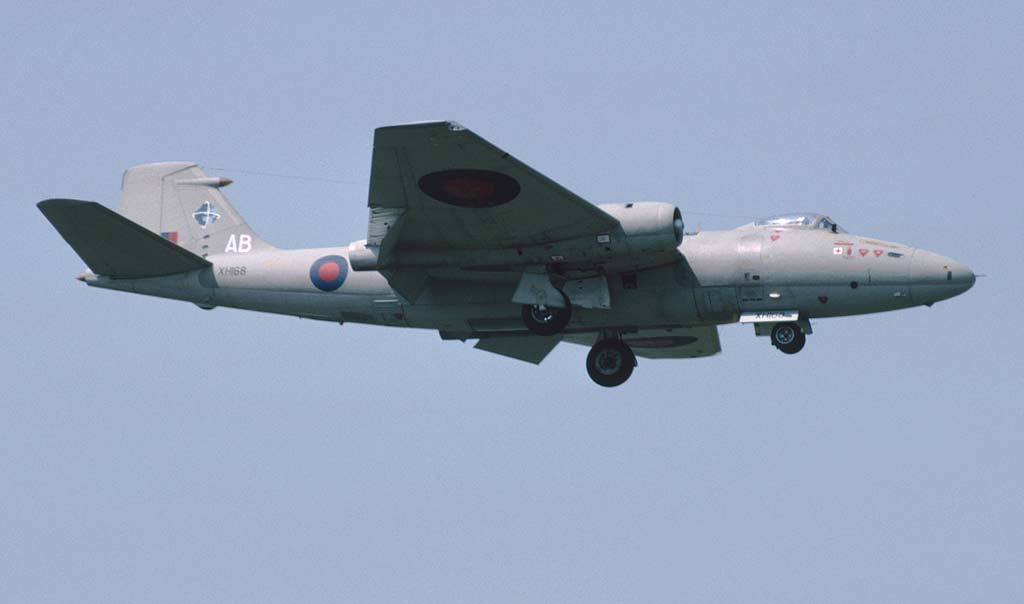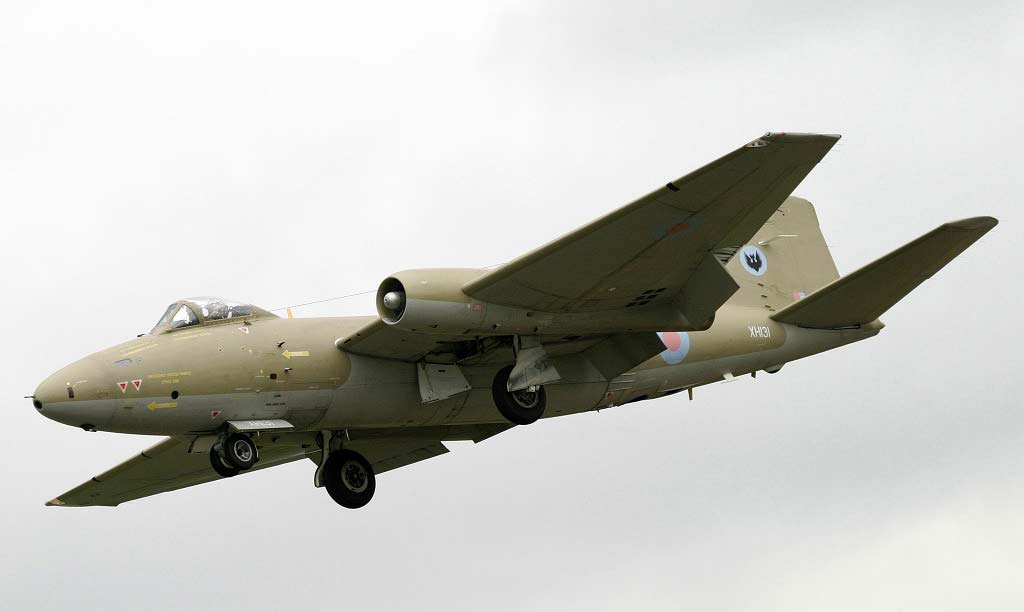The English Electric Canberra, a British first-generation jet bomber, excelled in high-altitude flight with notable payload capacity and range.
The English Electric Canberra was a pivotal jet-powered bomber in the post-World War II era. Renowned for its high altitude performance and versatility, it served in various roles, from strategic bombing to reconnaissance.
The Canberra represented a significant advancement in jet technology, marking a transition in bomber design with its emphasis on speed, altitude, and payload capacity.

History of the Development of the English Electric Canberra
In the aftermath of World War II, there was an evident need for advanced military aircraft, particularly in the realm of strategic bombing. The emerging Cold War era demanded high-performance, jet-powered bombers capable of eluding enemy defenses.
The English Electric Company initiated the Canberra project in the late 1940s, responding to an Air Ministry requirement for a new bomber. The primary objective was to develop an aircraft that could fly at high altitudes at speeds unreachable by then-current anti-aircraft systems.
The first flight of the Canberra occurred on May 13, 1950, marking a new chapter in British aviation. The aircraft’s design and performance were in line with the strategic needs of the time, focusing on high-altitude flight to avoid interception.
The Canberra does not have a specific NATO nickname, as it was developed prior to the standardization of NATO reporting names.
Design of the English Electric Canberra
The Canberra’s design was a blend of innovation and practicality. It was powered by two Rolls-Royce Avon turbojet engines, providing a balance of power and efficiency. The aircraft’s straight-wing design, measuring 64 feet (19.51 meters) in wingspan, was pivotal in achieving stability and lift at high altitudes.
The Canberra had a length of 65 feet (19.81 meters) and was designed with a bomb bay capable of carrying a significant payload. The design also allowed for versatility in roles, including photographic reconnaissance and electronic countermeasures.
One of the drawbacks of the Canberra was its relatively limited speed compared to later jet bombers. Additionally, the straight-wing design, while beneficial for high-altitude stability, limited its speed and maneuverability at lower altitudes.
Performance of the English Electric Canberra
The Canberra’s performance was characterized by its exceptional high-altitude capability. The Rolls-Royce Avon engines enabled a top speed of around 580 mph (933 km/h) and a service ceiling of 48,000 feet (14,630 meters). The aircraft had a range of approximately 3,400 miles (5,472 km) with external fuel tanks.
In comparison with contemporaries like the American B-47 Stratojet, the Canberra was slower but offered greater versatility and ease of operation. Its ability to operate at high altitudes made it less susceptible to anti-aircraft defenses of the time.

Military Use and Combat of the English Electric Canberra
The Canberra was equipped with a bomb bay capable of carrying up to 6,000 pounds (2,722 kg) of payload, including nuclear weapons. It served in various roles, from strategic bombing to reconnaissance and electronic warfare.
The aircraft saw extensive use in conflicts such as the Korean War, the Suez Crisis, and the Vietnam War. In these conflicts, the Canberra was employed for high-altitude bombing, tactical strikes, and reconnaissance missions.
The Canberra competed with aircraft like the Soviet Il-28 Beagle and the American B-57, a license-built version of the Canberra. Its success in various operations underscored its reliability and adaptability.
The Canberra was exported to several countries, including Australia, India, and Argentina, and saw service in numerous air forces around the world. It remained in operational use for many years, eventually being phased out as more advanced jet bombers and reconnaissance aircraft became available.
The English Electric Canberra holds a distinguished place in aviation history as a versatile and effective jet bomber. Its design and performance set the standard for high-altitude strategic bombing and reconnaissance during the early Cold War period. The Canberra’s legacy is reflected in its widespread adoption and lengthy service life, underscoring its significance in the evolution of military aviation.
Back to the Fighter Jet section.